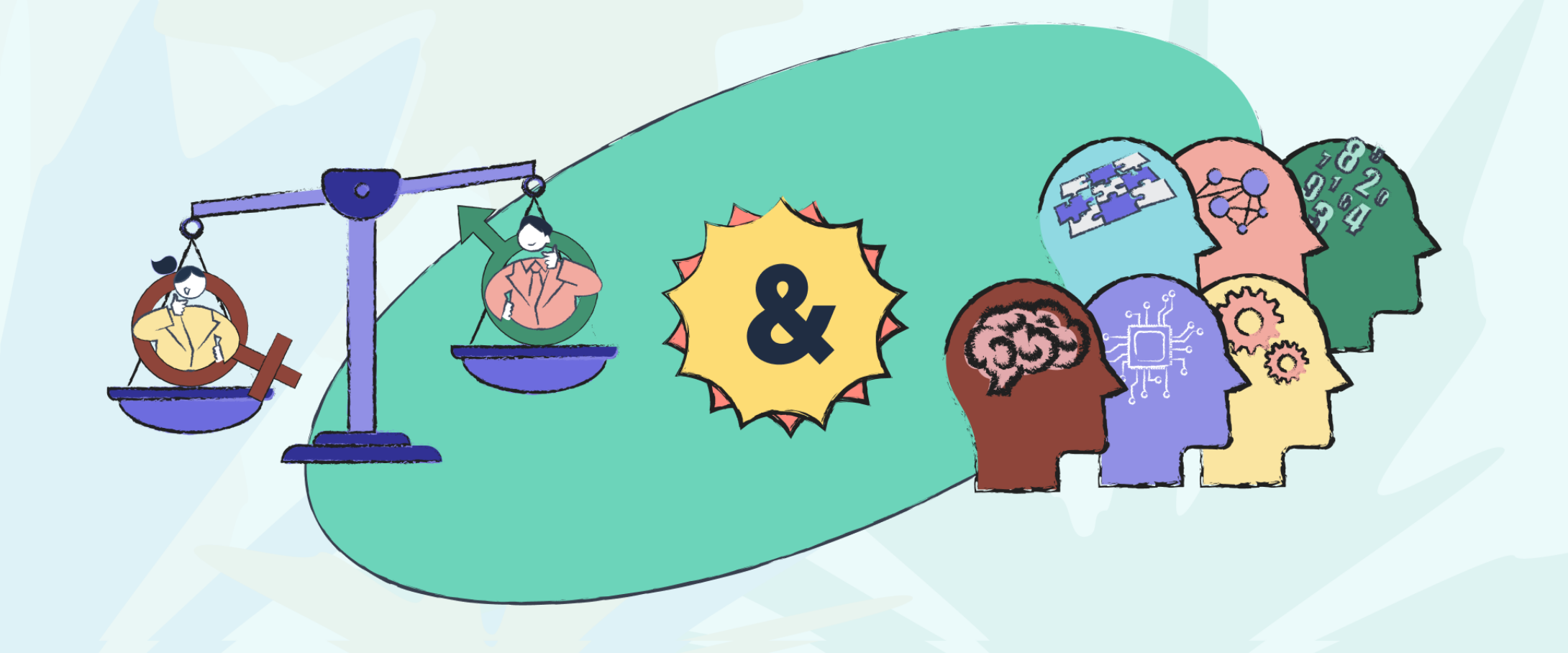Building a strong employer brand is crucial in today’s competitive talent market. Two key components often used are Equal Employment Opportunity also known as Equal Opportunity (EEO) and Diversity Statements. Have you ever wondered what the difference is between an EEO and a Diversity Statement?
While both aim for a fair and inclusive workplace, there are important differences between them. Understanding these distinctions can help you consider how to implement and demonstrate to top talent your commitment to building a diverse team.
Equal Opportunity Statements
An EEO statement prioritizes legal compliance and non-discrimination. It emphasizes the company’s commitment to fair employment opportunities for everyone, regardless of background. This is often mandated by law, especially for larger organizations or government contractors operating in the United States, United Kingdom, Canada, and the European Union. The tone is typically formal and legalistic, reflecting its focus on adhering to regulations. Think of an Equal Opportunity (EEO) statement as a company’s official pledge to follow anti-discrimination laws. These statements typically:
- Focus on legal compliance: They ensure the company follows regulations prohibiting discrimination based on race, gender, religion, and other protected characteristics.
- Use formal language: The tone is legalistic, clearly stating the company’s commitment to fair treatment for all applicants.
- List protected categories: They explicitly mention characteristics like race, religion, and disability that are covered by law.
“We are an equal opportunity employer. All qualified applicants will receive consideration for employment without regard to race, color, religion, sex, sexual orientation, gender identity, national origin, disability, or veteran status.”
Example EEO statement
Diversity Statement
A Diversity Statement, on the other hand, goes beyond legal requirements, focusing on the company’s broader vision for fostering a diverse and inclusive culture and workforce. It reflects a company’s values, goals, and initiatives related to Diversity, Equity, and Inclusion (DEI). Here’s what you might find in a Diversity Statement:
- Values-driven approach: These statements go beyond legal requirements, highlighting the importance of diversity for innovation and company culture.
- Focus on initiatives: Companies might mention programs or employee resource groups that promote diversity and inclusion (DEI).
- Broader perspective: Diversity statements often consider characteristics beyond those protected by law, aiming to foster a welcoming space for everyone.
“We are committed to building a diverse and inclusive team where every voice is heard and valued. Our diversity initiatives include employee resource groups, mentorship programs, and inclusive hiring practices. We believe that a diverse workforce drives innovation and excellence.”
Example Diversity statement
EEO and Diversity statement comparison
While both an Equal Opportunity Statement and a Diversity Statement reflect a company’s commitment to creating an inclusive and fair workplace, they serve different purposes and emphasize different aspects of that commitment. Here’s an easy-to-reference comparison.
| Equal Opportunity Statement | Diversity Statement | |
| Focus | Primarily legal and compliance-oriented, ensuring non-discrimination and adherence to Equal Opportunity laws. | Values-driven, highlighting the company’s commitment to creating a diverse and inclusive culture. |
| Content | Specific mention of protected characteristics and compliance with anti-discrimination laws. | Broader focus on DEI initiatives, programs, and the overall importance of diversity to the organization. |
| Tone | Formal and legalistic, ensuring compliance with laws and regulations. | More inspirational and aspirational, aiming to attract diverse talent and foster an inclusive culture. |
Which should you choose?
Both EEO and Diversity Statements play a role in building a fair and inclusive workplace. While some companies are legally required to have an EEO statement, Datapeople research suggests that a well-crafted Diversity Statement can be even more impactful. Diversity statements that have a similar tone and content as Equal Opportunity statements (i.e. formal tone, references to protected characteristics) generally fare better. Among candidates from a diverse range of backgrounds (women and non-binary individuals, people of color, people who identify as LGBTQ), they improved the perceived inclusiveness and belonging. When in doubt, opting for an Equal Opportunity statement is good practice but you should also consider a Diversity Statement for the following reasons.
- Perceived inclusivity: Diversity Statements with a focus on values and programs are seen as more welcoming by diverse candidates.
- Attracting talent: A strong Diversity Statement can signal a company’s commitment to creating a workplace where everyone thrives encouraging all talent to apply.
Include as standard in your employer value proposition
Both EEO and Diversity Statements play a crucial role in building a strong employer brand, attracting talent, and fostering a fair and inclusive workplace. An EEO statement demonstrates legal compliance, while a Diversity Statement showcases your commitment to building a welcoming and inclusive workplace culture. Consider your company’s needs and goals when deciding which statement to use, or perhaps even include both!
Educating your hiring teams on why they matter is important but not sufficient. To standardize inclusion and representation of your employer value proposition (EVP) you should consider a modern hiring platform with the following capabilities.
- Job post writing: Empower all writers to embrace your EVP standards by deploying a tool that helps them craft high-performance job posts in minutes with pre-approved templates and guidance that delivers your company standards.
- Learning and development: Experience-based learning with seamless in-experience upskilling and expert-led certifications and courses to truly instill better behavior.
- Data-driven optimization: Democratize data to embrace real-time strategic data-driven decision-making for every post and in-market requisition hire – every time.
- Intuitive, ATS-centric workflows: Out-of-the-box integrations ensure a consistent and standardized hiring process is accessible where your team already works, securing data, increasing efficiency, and improving adoption.
To accelerate your progress, we humbly suggest you join the hundreds of talent leaders trusting Datapeople to help them embrace diversity and deliver your EVP in a standardized and measurable way. Schedule a demo today to experience the future of compliance and standardization for hiring teams.
